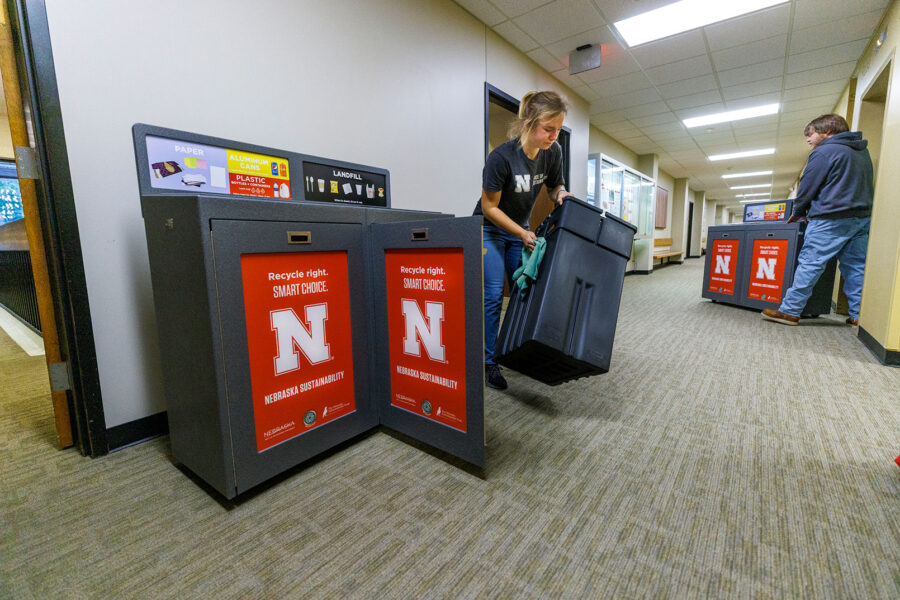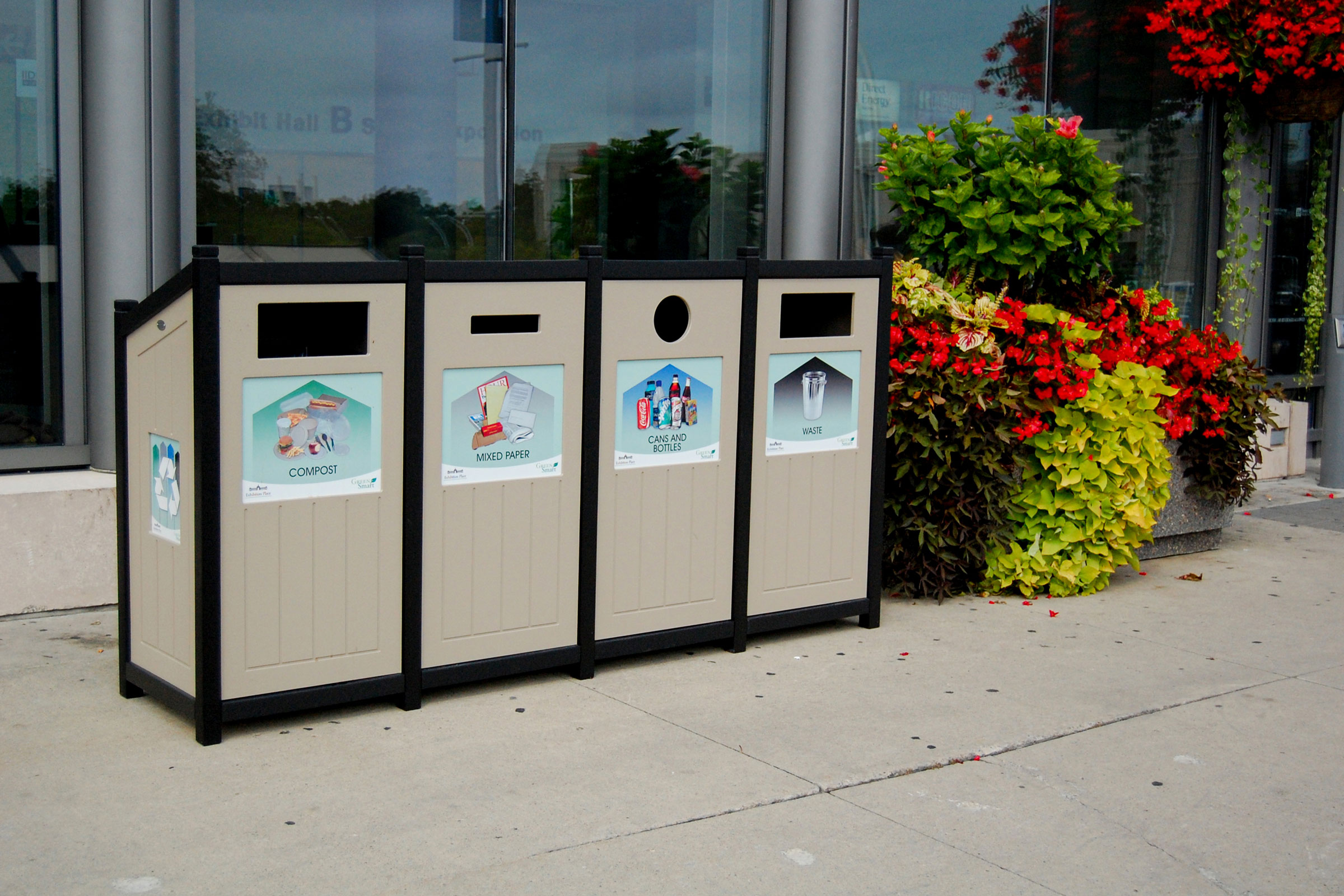Story at a glance:
- CleanRiver offers innovative recycling and sanitation solutions.
- The world of recycling is changing, and CleanRiver is future ready.
- Potential future waste streams might include e-waste, organic waste, and fluid capture.
When the Canadian government mandated that any building larger than 5,000 square feet have its own recycling program and reduce its solid waste by 50% or face fines, Bruce Buchan saw the need for innovative recycling and sanitation solutions. Today he’s the founder and CEO of CleanRiver—the Ontario-based company started more than 30 years ago to address national issues in waste management.
As a longtime environmental entrepreneur, Buchan wanted to help companies who struggled with the mandate. “So many times with architects and planners it’s not top of mind,” he says of recycling. “It’s an afterthought.” CleanRiver continues to work to change that through education—and by offering easy-to-use molded and manufactured bins that work across a wide number of locations, waste quantities, and waste streams.
Since starting CleanRiver Buchan has attended hundreds of speaking engagements to teach people about recycling solutions. The company has also installed bins at nearly 500 universities and 110 military bases, plus hospitals, sports venues, and even for A-List clients like Disney, Google, and Nasa. “It’s relevant to every building and facility out there,” Buchan says. “There’s a lot more thought that goes into this than you can imagine.”
The Importance of Recycling

CleanRiver installed Transition TIM recycling bins on the University of Nebraska-Lincoln’s campus. Photo courtesy of CleanRiver
On average North American office workers generate 2.2 pounds of garbage every day. Without proper waste management programs, most of it ends up in the trash, even though around 80% can be recycled.
One of CleanRiver’s first products was the Mini Bin—a 5.5-inch-tall garbage can designed for office desks. With less space to discard trash—and much of it that could be recycled—people were more inclined to think about what they threw out, therefore generating less waste.
As more organizations strive to create less trash and cities around the world tweak waste collection and sorting requirements, the need for appropriate receptacles also shifts. “Recycling streams change,” Buchan says.
To prepare for this, everything CleanRiver designs is what the company calls “future ready,” able to convert to collect one or several waste streams. “Your program becomes compliant at a very low cost with a quick time to retrofit.”
Potential future waste streams might include e-waste, organic waste, and fluid capture, Buchan says. At a coffee shop, for example, customers often toss cups with liquid still in them. When waste haulers charge trash pickup by weight, that leftover liquid quickly adds up and raises the price the coffee shop pays for their service.
Here are five steps to take before selecting their next recycling and waste solutions.
1. Think ahead.
Buchan says he’s seen builders neglect proper waste management time and time again.
“One of the important parts is to get out in front of the architects and designers to plant the seed,” he says. “Many times we are called in to try and fix what was never dealt with at the initial design stage.”
2. Keep it simple.
Buchan recommends clients introducing a new waste management program start with trash and recyclable beverage containers before adding compost or other streams.
Brooklyn Public Libraries has successfully implemented a comprehensive recycling program with CleanRiver’s user-friendly Moon Unit bins, consisting of a trash and recycling compartment, plus custom graphics.
“Keep it simple,” Buchan says. “Don’t go for the full monty right at the beginning. It’s just too much change for some people.”
3. Know your needs.
CleanRiver always starts client relationships by asking what they’re trying to accomplish and what’s not working. Once CleanRiver understands the client’s needs, the company recommends one of its available bins or a custom-made product at no extra cost to address any issues. “We try to understand what they’re trying to do, rather than just placing a bin,” Buchan says.
Little Rock Zoo was one client who had a previous recycling program that was failing as customers constantly tossed trash in the wrong receptacles. While the zoo had separate trash and recycling containers, waste was not separated effectively, and that needed to change. CleanRiver provided them with the Excel Dome Top recycling bin. The bin’s distinct bottle-shaped recycling opening led to a 65% increase in the amount of recycling collected at the zoo.
4. Be open to change.
Waste streams change along with business needs, and all of CleanRiver bins are easily able to be modified. “Truly successful recycling programs need products that are ready to adapt to your particular needs as well as environment and legislative changes,” Buchan says.
CleanRiver increased recycling visibility with 17 Transition TIM recycling bins at the College of Charleston—an effort to subconsciously increase on-campus recycling. These bins can collect anywhere from one to eight streams in a single container with a divider that allows you to change the number and volume of streams.
CleanRiver also installed Transition TIM recycling bins on the University of Nebraska-Lincoln’s campus. The college wanted to create a pilot recycling program that diverted more waste from landfills and captured some products that traditionally have been difficult to recycle.
5. Design for the people.
“I’ve seen it many times where new buildings really don’t care. They just put out these old, ratty garbage cans and recycling bins and slap a label on them,” Buchan says. But when people see this, he says, they tend to not take waste management seriously.
Buchan says it’s crucial to design for the people who will actually be using the bins, as well as those who will make sure their contents get to a waste hauler. “Someone from custodial has got to deal with this at the end of the day,” he says. “If it’s not easy to deal with it becomes a major problem.”
Like many of CleanRiver’s bins, Excel Slant Top recycling units have front service doors with rigid liners to make custodians’ job that much easier. The Enercare Center, an exhibition complex in Toronto, achieved an 85% waste diversion rate with Excel Slant Top receptacles, customized graphics, and program consultation tailored to their specific waste stream management needs

